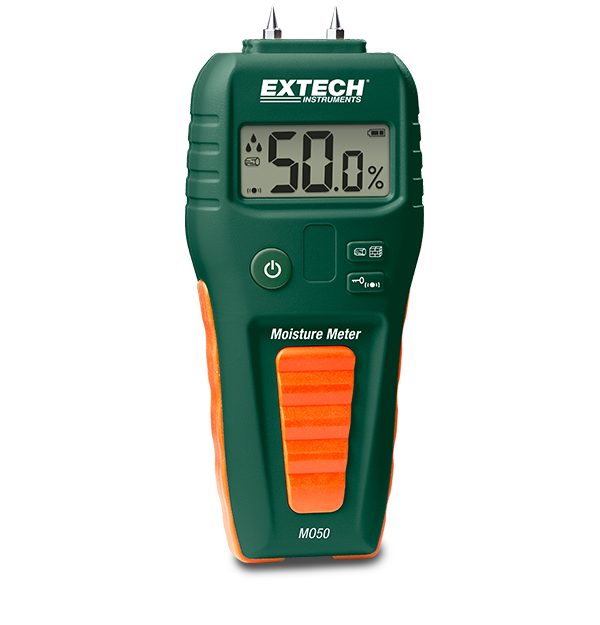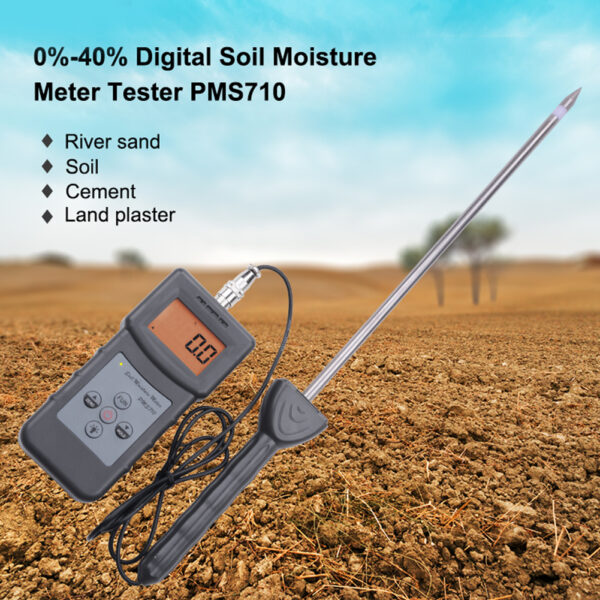Explore the Globe of Wetness Meters: Whatever You Need to Know
In the realm of wetness meters lies a world of precision and usefulness that often goes unnoticed. These tools, while apparently uncomplicated, hold a wide range of details that can dramatically influence numerous markets and applications. Comprehending exactly how moisture meters operate, the different types readily available, and their varied usages can drop light on their significance in guaranteeing quality and efficiency. By discovering the ins and outs of wetness meters, one can uncover a beneficial device that transcends mere measurement, supplying insights that can make a substantial difference in numerous areas.
Just How Wetness Meters Work
Dampness meters operate by gauging the electrical conductivity or capacitance of materials to identify the dampness web content existing - Moisture Meter. These meters are indispensable tools across different sectors, including building, woodworking, and farming. By using various methods such as pin-type or pinless modern technology, dampness meters offer precise readings that assist professionals make educated decisions
Pin-type moisture meters work by placing the sharp pins right into the product being checked. On the other hand, pinless moisture meters make use of electro-magnetic signals to scan a larger area without triggering any kind of damage to the product's surface.
Despite the approach made use of, moisture meters play an essential function in preventing problems such as mold growth, architectural damage, or product issues caused by excess dampness. Comprehending just how these meters work is crucial for making certain the top quality and integrity of materials in numerous applications.
Sorts Of Dampness Meters
Given the essential duty dampness meters play in numerous sectors, it is important to recognize the different types readily available to professionals for accurately analyzing moisture degrees. There are largely two main types of wetness meters: pinless and pin-type dampness meters.
Pin-type wetness meters utilize 2 pins that are placed into the material being examined to gauge the electric resistance in between them. This method is frequently used for wood, drywall, and other structure products. Pin-type meters supply precise analyses at particular midsts, making them suitable for determining dampness slopes.
On the other hand, pinless wetness meters utilize electromagnetic sensing unit plates to scan a larger location of the product without triggering any kind of damage. This kind appropriates for promptly scanning huge areas and is frequently made use of for flooring, wall surfaces, and ceilings. Pinless meters are convenient for taking readings on finished surface areas without leaving any kind of visible marks.
Both kinds of moisture meters have their advantages and are selected based upon the certain needs of the job available. Understanding the distinctions between these types is critical for experts to make precise wetness evaluations.
Applications Throughout Industries
Construction experts count on wetness meters to examine the wetness degrees in structure products like concrete, wood, and drywall, which is crucial for preserving structural integrity and protecting go to this site against issues like rot or mold. The floor covering industry makes use of dampness meters to determine the dampness web content in subfloors prior to installing different floor treatments, preventing costly damages due to excess wetness. In the food sector, dampness meters are used to keep an eye on and control moisture levels in items such as grains, nuts, and dried fruits to maintain quality and quality.
Tips for Utilizing Moisture Meters
Use the moisture meter's calibration setups to make sure exact analyses when gauging the moisture content in various materials. Calibration is crucial for the proper performance of a wetness meter. Prior to each use, it is a good idea to check and adjust the calibration setups according to the details material being tested. Additionally, make certain the meter is readied to the proper dampness array for the product you are determining to obtain the most specific outcomes.

When using a pin-type moisture meter, place the pins to the suitable depth recommended for the product being checked. This ensures that the wetness readings are drawn from the proper deepness within the product, offering a more accurate depiction of its wetness content. For pinless dampness meters, bear in mind to maintain appropriate contact with the product's surface area to obtain reputable readings.

Frequently examine and replace the batteries in your dampness meter to avoid unreliable analyses as a result of low power. When not in usage to prolong its life-span and preserve its accuracy, Store the meter in a risk-free and dry area. By complying with these pointers, you can maximize the performance of your moisture meter and obtain accurate moisture content dimensions throughout various products.

Upkeep and Calibration
To make certain the precision of moisture web content measurements, regular maintenance and calibration of the dampness meter are vital steps in its appropriate performance. Upkeep includes keeping the moisture meter tidy and free from debris that can affect its readings. It is vital to follow the maker's guidelines for cleaning up to protect against Recommended Reading damage to the gadget. Furthermore, routine calibration is required to validate the accuracy of the analyses. Calibration changes the wetness meter to ensure that it offers regular and reputable outcomes.
Calibration should be carried out regularly, particularly if the wetness meter is utilized often or in important applications where specific dimensions are called for. Several dampness meters feature calibration devices or can be adjusted by expert services - Moisture Meter. It is suggested to keep a log of calibration dates and results to track the performance of the moisture meter over time. By adjusting the wetness and preserving meter consistently, customers can rely on the accuracy of the moisture content dimensions gotten.
Conclusion
To conclude, wetness meters play a vital function in various sectors by accurately gauging the wetness content of products. Understanding just how these gadgets work, the various kinds offered, and proper upkeep and calibration are important for getting reputable results. Whether in building, agriculture, or production, making use of moisture meters assists ensure quality assurance and efficiency in processes.
Building and construction professionals depend on moisture meters to evaluate the dampness levels in building products like drywall, concrete, and timber, which is essential for preserving architectural integrity and stopping concerns like rot or mold. The flooring sector utilizes wetness meters to gauge the moisture material in subfloors prior to mounting various floor treatments, preventing expensive problems due to excess dampness.Utilize the moisture meter's calibration settings to make hop over to here certain precise analyses when gauging the dampness web content in numerous products. By following these tips, you can maximize the performance of your moisture meter and obtain accurate moisture content measurements across different materials.
In conclusion, moisture meters play an important function in numerous sectors by properly gauging the moisture content of materials.